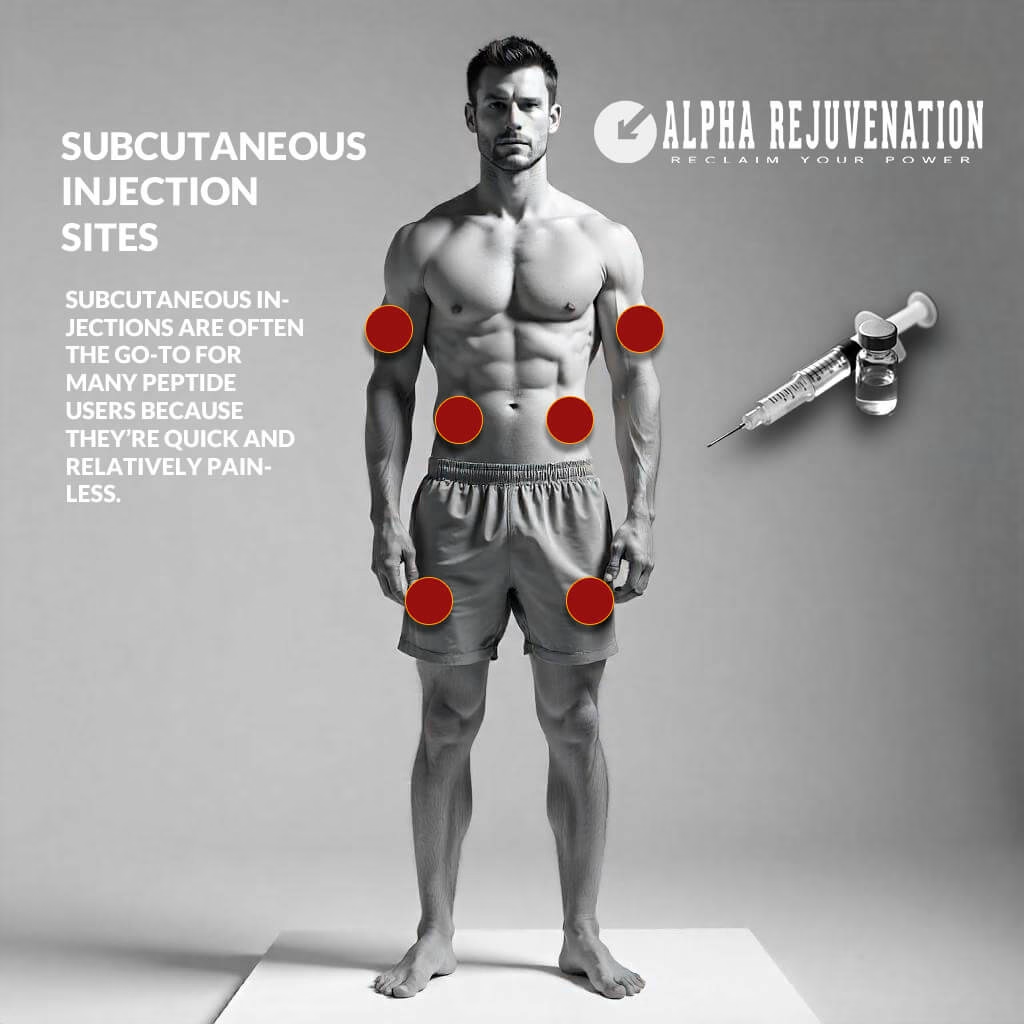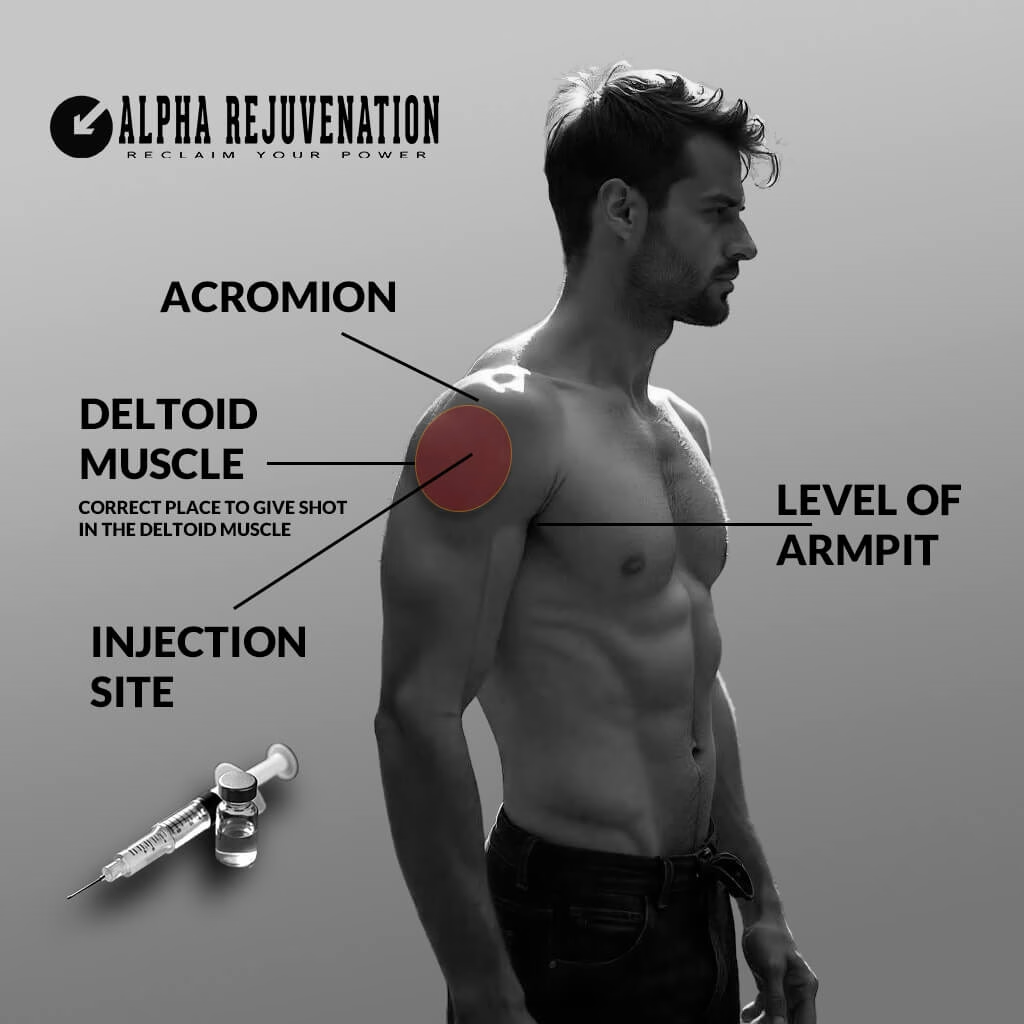Wondering if peptide injections might help you achieve your health or aesthetic goals but concerned about safety and proper technique? You’re not alone. With the rising popularity of peptide therapies for everything from skin rejuvenation to muscle recovery, many people are seeking reliable information on how to use these powerful compounds safely and effectively.
In this comprehensive guide, we’ll walk you through everything you need to know about peptide injections – from proper administration techniques to potential benefits and important safety considerations. Whether you’re considering peptide therapy for the first time or looking to refine your approach, this evidence-based guide will help you make informed decisions about your health.
What Are Peptides and Why Are They Injected?
Peptides are short chains of amino acids that serve as building blocks for proteins in your body. These small molecules play crucial roles in numerous biological functions, including hormonal regulation, tissue repair, and immune response.
Your body naturally produces many different peptides, each with distinct functions. Scientists can also create synthetic peptides in laboratories that mimic these natural compounds. Peptides have been utilized in skin care products for decades, but their therapeutic potential extends far beyond topical applications.
While peptides can be administered in various forms (including oral supplements, topical creams, and nasal sprays), injection is often the preferred method for several important reasons:
- Superior bioavailability: Peptide injections deliver peptides directly to the bloodstream, bypassing the digestive system and achieving the highest possible absorption rate. This makes them immediately bioavailable, meaning your body can begin utilizing the peptides almost instantly.
- Preservation of molecular structure: Many peptides are fragile and can be broken down by digestive enzymes when taken orally. Injection preserves their structure and function.
- Precise dosing: Injections allow for exact dosing, which is crucial for therapeutic effectiveness and safety.
Common Types of Peptide Injections
Different peptides offer distinct benefits, targeting specific physiological processes. Some of the most commonly used therapeutic peptides include:
- Collagen peptides: Collagen is a fundamental building block of skin, muscles, bones, tendons, ligaments, and other connective tissues. It provides structure, strength, and elasticity to these tissues. As we age, our bodies produce less collagen and break down existing collagen more rapidly, leading to wrinkled skin, sagging, and weaker muscles, bones, and tendons.
- Growth hormone peptides: These peptides stimulate the natural release of growth hormone, potentially supporting muscle growth, fat loss, and recovery.
- Healing peptides: Certain peptides like BPC-157 and TB-500 are being studied for their potential to accelerate tissue repair and recovery from injuries.
- Cosmetic peptides: Peptides like GHK-Cu (copper peptide) may enhance collagen and elastin production, functioning as antioxidants while aiding skin repair. Research indicates that GHK-Cu in face and eye products can reduce lines, wrinkles, and age spots while improving skin moisture, elasticity, and thickness.
Step-by-Step Guide to Safe Peptide Injection
Proper administration technique is essential for both safety and effectiveness when using peptide injections. While professional medical supervision is always recommended, here’s a comprehensive guide to the injection process:
1. Preparation and Supplies
Before beginning, ensure you have all necessary supplies:
- Prescribed peptide (properly stored according to instructions)
- Sterile syringes and needles (typically insulin syringes with 29-31 gauge needles)
- Alcohol swabs (70% isopropyl alcohol)
- Bacteriostatic water (for reconstitution, if needed)
- Clean gloves
- Sharps disposal container
- Clean, well-lit workspace
2. Hand Hygiene and Workspace Preparation
Thoroughly wash your hands with soap and water to minimize infection risk. Gather all materials and place them on a clean, flat surface. Always check the medication label to confirm it’s the correct peptide and that it hasn’t expired.
3. Peptide Reconstitution (If Required)
Many peptides come in lyophilized (freeze-dried) form and need to be reconstituted:
Remove tops from both the peptide and bacteriostatic water vials (note these tops cannot be reattached once removed). Clean the surface of both vials with an alcohol prep pad.
- Draw the appropriate amount of bacteriostatic water into the syringe
- Slowly inject the water into the peptide vial, aiming for the side of the glass (not directly onto the peptide powder)
- Gently swirl (don’t shake) the vial until the peptide is completely dissolved
- Store according to specific peptide storage requirements (usually refrigerated)
4. Preparing the Injection
Wipe the rubber stopper of your peptide vial with a new alcohol pad and allow it to dry completely before piercing it with the needle. This prevents contamination from entering the sterile vial. Remove the cap from the needle and pull air into the syringe equal to your prescribed dose amount.
- Insert the needle into the vial and inject the air
- Turn the vial upside down while keeping the needle inserted
- Slowly draw back the plunger to your prescribed dose
- Check for and remove any air bubbles by gently tapping the syringe and pushing small amounts of air out
5. Choosing and Preparing the Injection Site
Most peptides are administered via subcutaneous injection (into fatty tissue just beneath the skin). Common injection sites include:
- Abdomen (at least 2 inches away from the navel)
- Outer thigh
- Upper buttock
- Back of the upper arm
Clean the injection site with a fresh alcohol pad using a circular motion working outwards. Allow the area to fully air dry before injecting.
6. Administering the Injection

For subcutaneous injections:
Pinch the cleaned injection site to create a firm surface. Insert the needle at a 45-degree angle quickly in one smooth motion. Once the full needle is inserted, release the pinched area.
It’s important to rotate injection sites daily to prevent tissue damage. When drawing multiple peptides into one syringe, take care not to push fluid back into any vial, as this can contaminate the peptide stock.
7. Completing the Injection
Slowly push the plunger with your non-dominant hand to administer the medication. Place an alcohol swab or tissue near the injection site, quickly pull out the needle, and press gently on the site.
8. Proper Disposal
Place used syringes, needles, and medication containers in a proper Sharps container. Keep a record of the injection site, date, and time for future reference.
Intramuscular vs. Subcutaneous Injections

While most peptides are administered subcutaneously, some may require intramuscular (IM) injection for optimal results:
For intramuscular injections, the deltoid muscle is easily accessible, making it a popular choice for self-administration. Since it’s a smaller muscle, absorption occurs more quickly, which benefits certain types of peptides. Always inject at a 90-degree angle to ensure the peptide reaches the muscle.
Common sites for intramuscular peptide injections include:
- Deltoid (shoulder muscle)
- Vastus lateralis (outer thigh)
- Gluteus medius (upper outer quadrant of the buttock)
Safety Considerations and Potential Side Effects
While peptide therapy can offer significant benefits when used appropriately, it’s important to be aware of potential risks and side effects:
Common Side Effects
Peptide injections are generally safe when administered by licensed professionals, although common side effects can include injection site irritation and hypersensitivity reactions.
Some possible side effects of peptide treatments include allergic reactions (hives, swelling, difficulty breathing), heart issues (high blood pressure, fast heart rate, palpitations), stomach problems (nausea, vomiting, diarrhea), and cognitive symptoms (headaches, dizziness, fatigue).
More Serious Risks
Those engaging in self-prescribed peptide treatments put themselves at risk. Some of the more serious risks that rarely occur under professional medical guidance can be significant.
For unapproved peptides that haven’t been thoroughly tested in humans, the safety profile remains largely unknown. Potential side effects could range from mild to severe, including allergic reactions, injection site complications, and systemic effects. Without comprehensive clinical data, it’s impossible to predict or manage these risks effectively.
Special Considerations for Specific Groups
Pregnant or nursing individuals should approach peptides with extreme caution due to limited safety data. Those with autoimmune conditions should only use peptides under close medical supervision, as certain peptides can trigger immune responses. People with severe allergies or compromised liver or kidney function should consult with physicians before beginning peptide therapy.
Choosing a Qualified Provider
Selecting a reputable source for peptide injections is critically important. Quality control and purity are paramount, as market variability can significantly affect safety and efficacy. Look for providers who are transparent about their sourcing and provide third-party testing results.
It is essential to choose a qualified provider and ensure long-term safety monitoring to minimize risks. You should consult with a healthcare provider to determine the appropriate frequency of peptide injections, which can range from weekly to several times a week based on individual needs and treatment goals.
Frequently Asked Questions About Peptide Injections
Are peptide injections FDA-approved?
While some peptide medications are FDA-approved for specific conditions, many peptides used for enhancement purposes are not. The FDA has only approved a handful of types of peptides to treat specific medical conditions by prescription only. Moreover, many peptides are currently banned doping agents in professional sports, and little is known about their long-term safety.
How long does it take to see results from peptide therapy?
Results vary significantly depending on the specific peptide, your individual response, and your treatment goals. Some effects may be noticeable within days, while others may take weeks or months of consistent therapy.
What’s the difference between peptides and steroids?
Peptides and steroids are different molecules. Peptides are chains of amino acids, while steroids are ring-shaped fatty molecules. Both can help build muscle and burn body fat, but they work through different processes. While peptides generally have fewer side effects, steroids can cause many serious and sometimes permanent side effects.
Can I take multiple peptides at once?
Some peptide protocols do involve multiple peptides that work synergistically. However, this should only be done under qualified medical supervision to ensure safety and proper dosing.
How should peptides be stored?
Most reconstituted peptides require refrigeration (36-46°F/2-8°C) and should be protected from light. Always follow the specific storage instructions for your prescribed peptide.
Conclusion: Making Informed Decisions About Peptide Therapy
Peptide injections represent an exciting frontier in personalized health and wellness. When administered correctly under appropriate medical supervision, they may offer significant benefits for various health and aesthetic goals.
However, the field continues to evolve, and much research is still underway to fully understand the long-term effects and optimal protocols for different peptides. The safest approach is to work with qualified healthcare professionals who specialize in peptide therapy and can provide personalized guidance based on your specific needs and medical history.
By understanding proper administration techniques, potential benefits, and important safety considerations, you can make informed decisions about whether peptide therapy might be right for you – balancing the potential rewards with a clear-eyed view of the risks involved.
Remember that peptide therapy should complement, not replace, fundamental health practices like proper nutrition, regular exercise, adequate sleep, and stress management. When approached thoughtfully as part of a comprehensive wellness strategy, peptides may offer valuable support for your health and performance goals.
{ “@context”: “https://schema.org”, “@type”: “FAQPage”, “mainEntity”: [ { “@type”: “Question”, “name”: “Are peptide injections FDA-approved?”, “acceptedAnswer”: { “@type”: “Answer”, “text”: “While some peptide medications are FDA-approved for specific conditions, many peptides used for enhancement purposes are not. The FDA has only approved a handful of types of peptides to treat specific medical conditions by prescription only. Moreover, many peptides are currently banned doping agents in professional sports, and little is known about their long-term safety.” } }, { “@type”: “Question”, “name”: “How long does it take to see results from peptide therapy?”, “acceptedAnswer”: { “@type”: “Answer”, “text”: “Results vary significantly depending on the specific peptide, your individual response, and your treatment goals. Some effects may be noticeable within days, while others may take weeks or months of consistent therapy.” } }, { “@type”: “Question”, “name”: “What’s the difference between peptides and steroids?”, “acceptedAnswer”: { “@type”: “Answer”, “text”: “Peptides and steroids are different molecules. Peptides are chains of amino acids, while steroids are ring-shaped fatty molecules. Both can help build muscle and burn body fat, but they work through different processes. While peptides generally have fewer side effects, steroids can cause many serious and sometimes permanent side effects.” } }, { “@type”: “Question”, “name”: “Can I take multiple peptides at once?”, “acceptedAnswer”: { “@type”: “Answer”, “text”: “Some peptide protocols do involve multiple peptides that work synergistically. However, this should only be done under qualified medical supervision to ensure safety and proper dosing.” } }, { “@type”: “Question”, “name”: “How should peptides be stored?”, “acceptedAnswer”: { “@type”: “Answer”, “text”: “Most reconstituted peptides require refrigeration (36-46°F/2-8°C) and should be protected from light. Always follow the specific storage instructions for your prescribed peptide.” } } ] }More To Read
- Sermorelin: Dosage, Uses, and Comparisons – Learn more about Sermorelin: Dosage, Uses, and Comparisons to deepen your understanding of peptide synergy and application in rejuvenation therapy.










